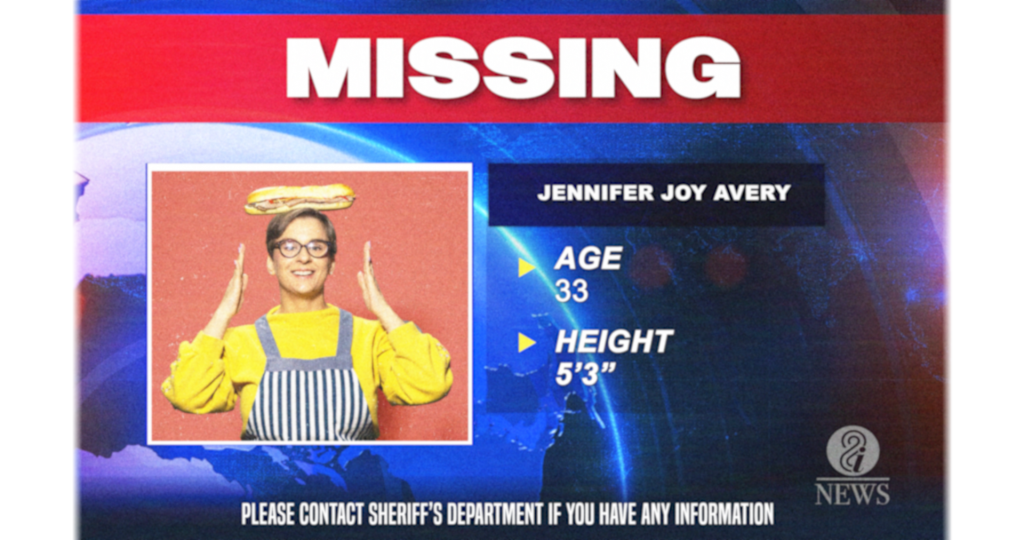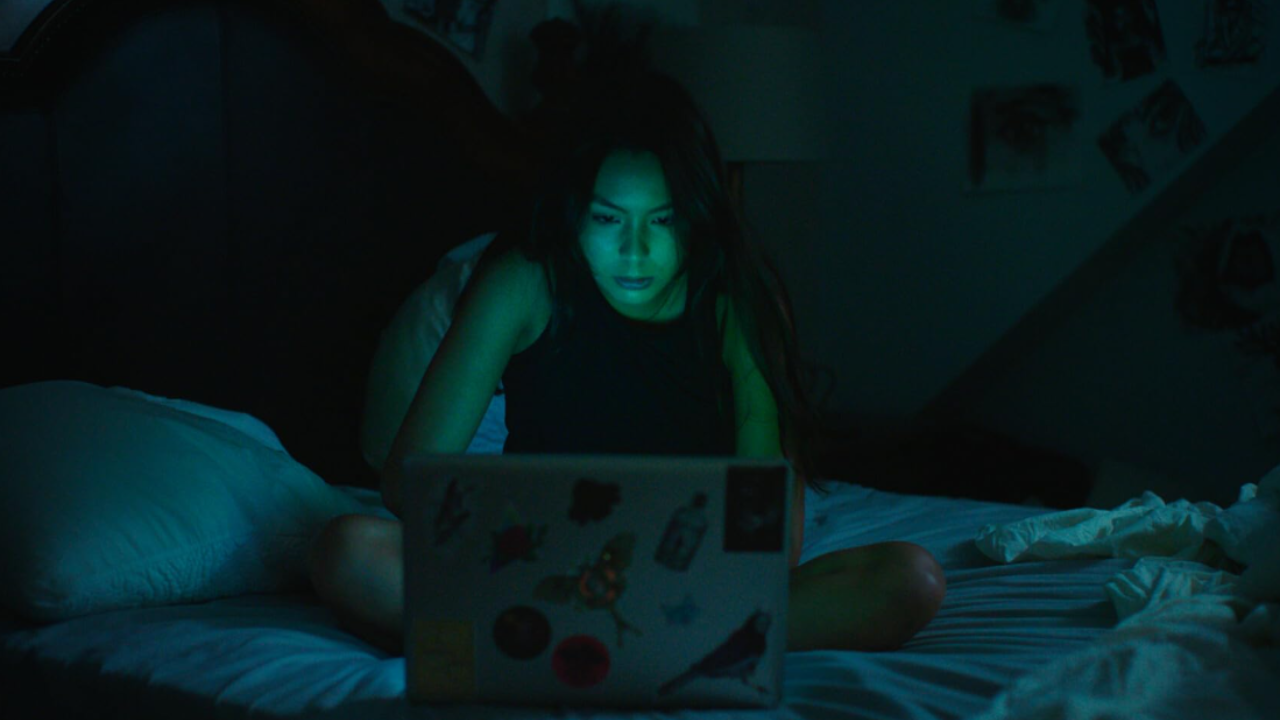Reviews
REVIEW: Who’s Watching ‘The Watcher’?

As someone from the New Jersey suburbs, who recently moved back to the suburbs after living in NYC for ten years, I was thoroughly obsessed with the story of The Watcher. I feel more like I’m in a horror movie since moving back than I ever did in NYC. In NYC, everywhere is so busy and loud that the suburbs feel creepily quiet and dark. So, to say I was excited about the Netflix series would be an understatement. I even have an ex who lives near the actual house—657 Boulevard in Westfield, New Jersey, and I live about 45 minutes from the house.
I’ve read The Cut piece on the whole ordeal numerous times. It’s one of my favorite horror stories. I’ve gotten stoned and fallen down many a rabbit hole on theories about the true identity of The Watcher, thinking I can solve it. The wildest thing about the whole story is that there really is no obvious conclusion—it could be anyone who sent those ominous, threatening letters to the Broaddus family. Any new information on the story, which there rarely is, leads nowhere.
The story itself is terrifying to the folks it happened to, yet to outside perspectives it might feel a little dull. The Broaddus family bought their dream home for 1.3 million dollars in 2014, a six bedroom home with more than one fireplace. But Maria and Derek Broaddus, along with their three kids, never even fully moved into the home. One night, when Derek was at the house painting, he went out to check the mail and found a letter addressed to “The New Owner,” and it was like something out of a horror movie. The first letter was threatening right out the gate, reading:
657 Boulevard has been the subject of my family for decades now and as it approaches its 110th birthday, I have been put in charge of watching and waiting for its second coming. My grandfather watched the house in the 1920s and my father watched in the 1960s. It is now my time. Do you know the history of the house? Do you know what lies within the walls of 657 Boulevard? Why are you here? I will find out… Do you need to fill the house with the young blood I requested? Better for me. Was your old house too small for the growing family? Or was it greed to bring me your children…Who am I? There are hundreds and hundreds of cars that drive by 657 Boulevard each day. Maybe I am in one. Look at all the windows you can see from 657 Boulevard. Maybe I am in one. Look out any of the many windows in 657 Boulevard at all the people who stroll by each day. Maybe I am one.
It was signed “The Watcher” and immediately, understandably, it terrified Derek. That first letter alone would have been enough to make me lose my shit if I never figured out who wrote it—But also, I can’t afford a 1.3-million-dollar mansion, so what do I know.
The letter, the writing, and the whole giving themselves a spooky name, truly feels like something fictional. As a kid, I always thought every robber, murderer, and crime boss gave themselves a fantastical name because I read too many comics and watched too many horror movies. So, this thing that felt like a real-life horror movie appealed to me, even as someone who does not get into true crime. Other than the letters and a list of possible suspects that included nearly every person in town (ranging from “angry realtor” to every person living on the street), there isn’t much evidence which only makes it feel more horror movie like—The Watcher feels like they could be Ghostface or Michael Myers (although the latter not quite being that verbose). The only substantial evidence in the case was when they identified the saliva on the envelope as belonging to a woman (I am not a forensic analyst, so I have no clue how that even works).

So, when Ryan Murphy got his hands on the story, I was both happy and worried. I am not Mr. Murphy’s biggest fan (but if I ever get hired to write on one of his projects, I will deny deny deny) and have only fully gotten through three seasons of American Horror Story. But the story of The Watcher was one that felt like it would incredibly work well as a Netflix limited series.
The Saturday after the show was released, I was very hungover and decided to binge the entire thing. I was as excited as someone with a paralyzing hangover could be. The show works well sometimes and other times does not. I think the biggest problem going into the series was that I felt like I could recite it by heart. So when the first episode presented every neighbor as a whacky cartoon villain and added more to that first letter, I was annoyed. But I persevered like the brave soldier I am (I am not). I loved and hated how often we saw a figure run by in the background.
The show became very Ryan Murphy with the addition of the “the neighbors might all be in a blood cult” storyline that went nowhere and the John Graff (played by Joe Mantello) of it all. Graff was a character who I’d thought was wholly made up as he felt like a character ripped right out of American Horror Story: Asylum. John Graff was first introduced in the series as a mysterious man who visits the home and has a creepy chat with the fictional main character of Dean Brannock (Bobby Cannavale). We later learn he is a former resident who murdered his entire family in the home and then vanished. I rolled my eyes at the big reveal that he was this murderer—until I googled it and found out the character was also based on a true story. John Graff was based on a real-life murderer named John List who lived in Westfield, murdered his family, and then vanished. The Ryan Murphy of it all was that he did not live at 657 Boulevard and his murders happened in 1971—he also never visited the home, as he was caught 18 years after the murders he committed.
The thing about The Watchers as a series is, aside from spooky letters, nothing else really happened to the family. Which is for sure spooky enough for real life, but for a show? It leaves you feeling a little empty. The show gave us episode after episode of Cannavale’s Dean and Naomi Watts’s Nora accusing nearly everyone on the entire stacked cast of being The Watcher but the only thing we end up knowing for sure of these fictionalized characters was that it wasn’t Watts’s Nora or Jennifer Coolidge’s eccentric realtor character Karen Calhoun.
A lot of folks in town, both in the series and in real life, felt it might’ve been a hoax done by the father. And, in both real life and in the series, we do know the father wrote at least one letter that was sent to the neighborhood. He owned up to it in his interview with The Cut. But they never sold their story anywhere and took a loss on the house—the series only happened when the extensive Reeves Wiedeman piece for The Cut was bought in a 7 figure deal from Netflix.
So, while the show doesn’t really give any new insight into the case and, spoiler, ends the way the real-life case ended—with the family selling the house at a loss, never finding out the identity of The Watcher, it still makes for a fun, albeit a little frustrating watch. Even to a horror fan who knows the story like he knows all the lines to the first Scream movie.
Maybe one day while staying up late, after smoking ridiculous amounts of weed, I’ll crack the case myself!
Reviews
Brooklyn Horror Film Festival 2025: ‘Buffet Infinity’ Review

Within the found footage subgenre exists an even more niche and untapped market. Screen life has slowly overtaken found footage; hardcore fans, like myself, ache for something different. One of the more interesting sub-subgenres of found footage is something that I don’t think has a name yet, so let’s name it here and now. How about…TV-gone-rogue! The TV-gone-rogue subgenre is small. Ghostwatch got the ball rolling for these gone rogue-like films, but there was radio silence for quite some time. It would be Chris LaMartina’s WNUF Halloween Special that really brought this idea back into the limelight. Many filmmakers have tried to make TV-gone-rogue interesting, and many have failed. That is until Simon Glassman stepped onto the scene with Buffet Infinity.
Buffet Infinity: A Chaotic Tale of Westridge
The town (city?) of Westridge is whisked into chaos when the new Buffet Infinity restaurant rolls into town. Local sandwich shop owner Jennifer Avery (Allison Bench) is the first to take the soon-to-be conglomerate to task with increasingly pointed advertisements. Suddenly, local restaurant owners/workers go missing in droves as Buffet Infinity expands into neighboring businesses. Sinkholes, missing cityfolk, quarantines, and mysterious sounds abound, leaving residents to ask one question…who really has the sauce?
On the Brooklyn Horror Film Festival schedule, the header image for Buffet Infinity shows multiple people T-posing and floating in the sky. I was immediately sold. I had no clue what I was getting into, and I didn’t want to know. The film was introduced as “one of the craziest we have this year.” (Slightly paraphrasing.) What was I about to watch? Little did I know, it was about to be an hour and forty minutes of small-town madness.
Writers Allison Bench and Elisia Snyder, and writer-director Simon Glassman, transport viewers into an upside down world of weaponized local ads; a thriving town invaded by the deep pockets of monopolized capitalism. As someone who grew up in a decently sized town, though probably not large enough to be considered a city, there was a tinge of nostalgia that accompanied Buffet Infinity. Westridge feels cozy and intimate, a town where everyone knows your name. It’s a “baked in a buttery flaky crust” town. Sure, they have their McDonald’s and Burger Kings, but the real townsfolk eat at Jennifer’s sandwich shop–local knitting circles murmur about what they think is in Jennifer’s secret sauce. Simply put, Westridge feels like a home that many people like myself grew up in. And it reminds us of a simpler time that’s long gone.

A Unique Blend of Humor and Eldritch Terror
Buffet Infinity hides its horror well. It slowly guides the viewer into a sense of unease. As easily as the creators have you laughing, they have you squirming. The absurdist joy quickly transforms into Eldritch terrors from beyond. Many filmmakers say they’re inspired by the idea of it’s-not-what-you-see that’s scary, but many times it feels performative. Bench, Glassman, and Snyder have crafted a truly special script that edges you with terror and excitement. They constantly push you to the edge of release, and then back away. It’s the Japanese water torture of exposition. And, for me, it works incredibly well.
One of the most important aspects of Buffet Infinity is the over-capitalization of our lives. While the creators tackle this idea in a tongue-in-cheek manner, their message is highly effective. For the most part. This constant tete-a-tete between Buffet Infinity and the locals is highly amusing, but brings a larger conversation to the forefront. The town I grew up in is a shadow of what it once was. And I know many feel the same about the towns they grew up in. I can already hear the moans of people who dislike this film: “Brandon, it’s not that deep.” And I would highly disagree. Buffet Infinity feels like a reflective protest film–a loud and proud middle finger at what we should have said when the Super Walmart put mom and pops out of business.
Sorry, this review has gone off the rails. Let’s reel it back in a bit.
Why Buffet Infinity Redefines Found Footage
Buffet Infinity is a riotous romp, a hilarious horror that goes from zero to 100 pretty damn fast. Each commercial slowly builds on its last and uniquely tells its story. This film sets a new precedent for the TV-gone-rogue subgenre. Not to directly compare, but a film like WNUF Halloween Special (a film I love) uses its commercials as a coda; it’s a separation of what you saw/heard and prepares you for the next movement. Buffet Infinity uses its commercial to create the story. Instead of watching news pieces, then irrelevant commercials, then back to news pieces, Buffet Infinity breaks the mold. Hell, it creates the mold.
As someone who has been dying to see a Welcome to Nightvale film, Buffet Infinity is the closest thing I could ask for. It is full of killer performances (looking at you, Ahmed Ahmed), is well-crafted, and sets a new precedent on an underutilized side of found footage. Buffet Infinity is a full-course meal. I highly suspect that Buffet Infinity will gather the unwavering support that Hundreds of Beavers gathered and will go on to be considered an instant classic of the 2020s.
Reviews
Brooklyn Horror Film Fest 2025: ‘It Needs Eyes’ Review

We are all very much aware of how much time we spend on our phones. More importantly, anyone on the internet can see how younger generations are impacted by being constantly online. So, Zack Ogle and Aaron Pagniano’s new film, It Needs Eyes, is preaching to the choir. However, it adds creepy layers to the conversations many of us are already having today.
It Needs Eyes follows a teen named Rowan (Raquel Lebish) who is moving in with her aunt after a traumatic event. Her aunt Mella (Lydia Fiore) hasn’t spoken to the family in years. So, her relationship with her niece is strained to say the least. However, she has stepped in now that Rowan’s father is in the hospital. Further widening their divide is the fact that Rowan is glued to her phone.
The Internet Is Scary
We see Rowan watching random videos, as she tries to distract herself from her own thoughts while she worries about her father. However, soon, cat videos aren’t doing it for her, and she starts to find extreme videos online. Things escalate to the point that she is watching self-harm videos and clips of people dying. This addiction begins to make it hard for her to connect with the people around her, including her new neighbor and love interest, Alex (Isadora Leiva).
It Needs Eyes has a protagonist that many can relate to. After all, aren’t we all using these smart devices to hide from our own problems? Who among us hasn’t lost an embarrassing amount of hours watching videos and reels? However, because it’s driving in the internet addiction lane, Rowan’s need for content escalates. She needs darker videos in the same way that someone makes the leap into harder drugs. Her journey parallels nicely with her father’s battle with addiction, which is one of the many things Rowan doesn’t seem ready to face.
Addiction and Loneliness are a Deadly Combo
Rowan’s addiction, loneliness, and inability to fully connect with people not on her phone eventually leads her to stumble across the ultimate score. She discovers a woman named Fishtooth (Lola Blanc) who made videos in the 80s and seemingly disappeared. Rowan cannot let this mystery go and soon begins to follow clues that Fishtooth may be closer than she thinks. This is where the creepy mystery thread begins to weave itself around all of the other threads of the film. Before Fishtooth was introduced, I was starting to worry this movie would just be seven fucked up images in a trench coat.
It Needs Eyes is one of those movies you go back and forth on. I loved discussing the themes of it in the bar after the Brooklyn Horror Film Fest screening. I even really dug some of the twisted imagery and topics it manages to tackle. The movie deserves some respect for how it handles so many issues surrounding internet culture without straying too far from its path. If you’re looking for a dark exploration of how the internet is absorbing us and preventing us from being present in our actual lives, this is your movie. It’s an interesting and at times disturbing reminder that we should all unplug more often.























